“Where the fold should be / There is no fold” reads the entire tenth poem of Reading Red. Reading this poem is a jarring experience: the book has many folds, extra folds. Is the “fold” of the poem related to the physical construction of the book in which it is printed, or is it a statement about something outside the book? As this poem makes clear, the work is concerned with the physical form of its presentation.
Category: Art and Design
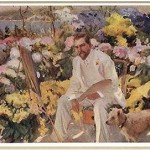
In addition to rich files housing a range of materials, artists are searchable in an online database and books, images, and periodicals are being digitized and made freely available to users worldwide. The Library also serves as a home for twenty research fellows each year, fostering the foundations for the next generation of American art scholars.
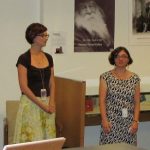 For the past two summers, three art libraries, the Hirshhorn Library (HMSG), the African Art Library (NMAA), and the American Art Library/National Portrait Gallery Library (AA/PG) have hosted graduate library student interns through the Smithsonian Libraries Professional Development Internship to work on the three libraries’ artists’ book collections.
For the past two summers, three art libraries, the Hirshhorn Library (HMSG), the African Art Library (NMAA), and the American Art Library/National Portrait Gallery Library (AA/PG) have hosted graduate library student interns through the Smithsonian Libraries Professional Development Internship to work on the three libraries’ artists’ book collections.
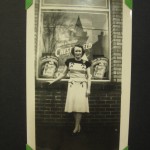 A vintage photograph of a young woman, casually posed in front of a storefront window, which advertises the “friendly” Chesterfield cigarette, invites readers into X-Ray Magazine. This San Francisco Pneumatic Press publication can be found hiding, along with other artists’ books, in the Hirshhorn Museum and Sculpture Garden Library collection.
A vintage photograph of a young woman, casually posed in front of a storefront window, which advertises the “friendly” Chesterfield cigarette, invites readers into X-Ray Magazine. This San Francisco Pneumatic Press publication can be found hiding, along with other artists’ books, in the Hirshhorn Museum and Sculpture Garden Library collection.
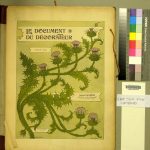
In 2011, The Cooper-Hewitt Museum National Design Library was awarded a $96,000 grant from the CCPF (Collections Care and Preservation Fund, an internal grant awarding source) of the Smithsonian Institution to conduct a condition assessment survey of approximately 4,000 items of its Special Collections. We’ve done many preservation and book housing projects over the years, with repairs and custom enclosures made when the occasion demanded, but we’ve never had the opportunity or plan in place to look at the condition of our Rare Book collection as a whole before.
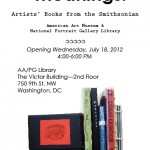 We often think of the book as a container of information. A book’s text conveys meaning through reading. However, meaning can be expressed in other ways. Typography, ink color, blank space, paper, artwork, and binding also provide information to the reader about the artist’s project. Featuring artists’ books from the Smithsonian American Art Museum/National Portrait Gallery Library (AA/PG), this exhibit investigates the way that book artists use material and visual features to make meaning.
We often think of the book as a container of information. A book’s text conveys meaning through reading. However, meaning can be expressed in other ways. Typography, ink color, blank space, paper, artwork, and binding also provide information to the reader about the artist’s project. Featuring artists’ books from the Smithsonian American Art Museum/National Portrait Gallery Library (AA/PG), this exhibit investigates the way that book artists use material and visual features to make meaning.


